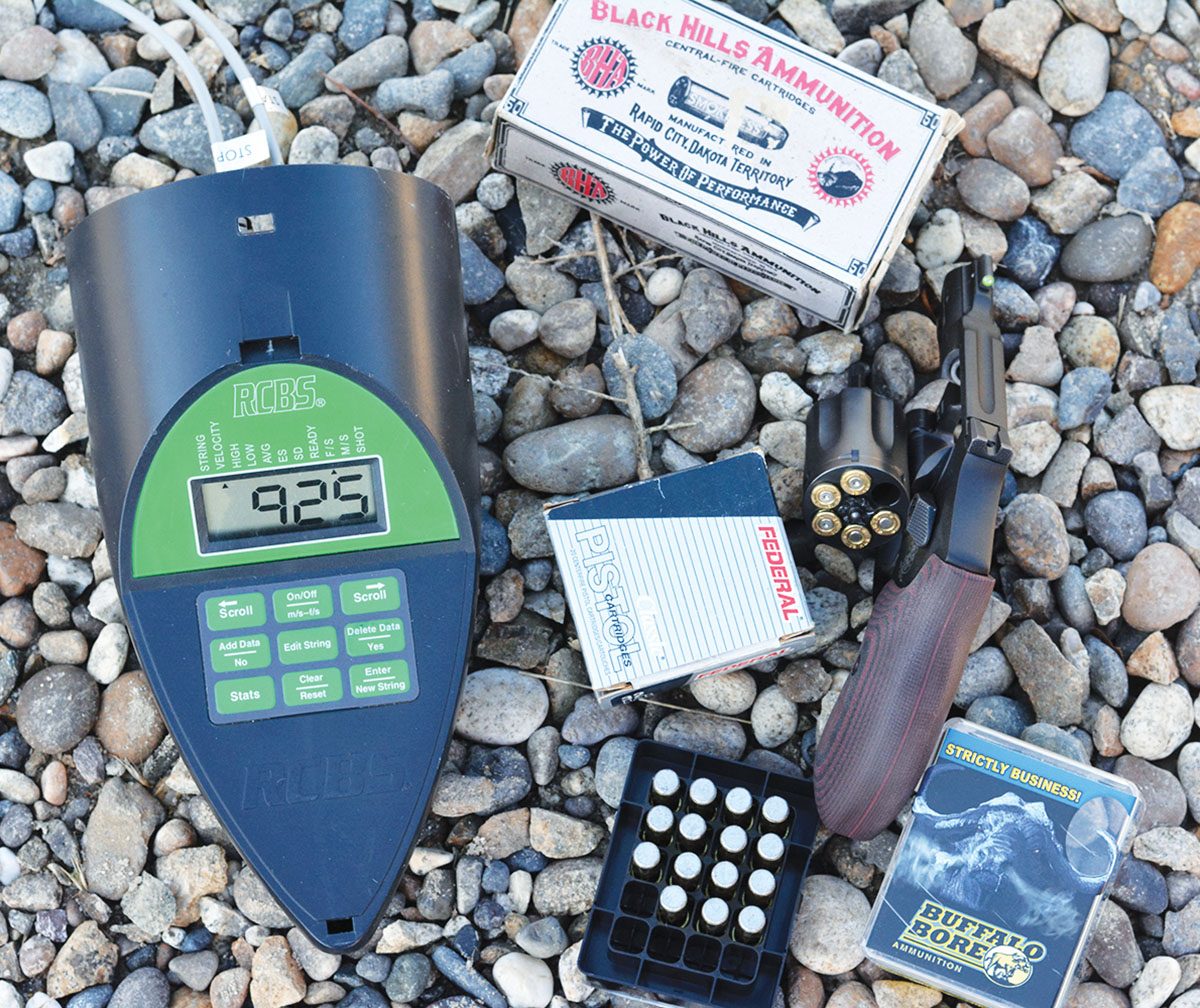
The 32 H&R Magnum gave respectable velocities from the short barreled Smith & Wesson 432UC.
Seventy-five years ago, Smith & Wesson and most major gun companies struggled financially. That was a result of the 10-plus years of the Great Depression that was followed by nearly four years of U.S. involvement in World War II. At this point, they had to transition manufacturing to focus on producing guns for civilians in order to survive. One of the most interesting new handguns introduced during the post-war era was the Smith & Wesson 38 Chiefs Special. It was built on the brand-new J-Frame, had a five-round capacity and was chambered for the widely popular 38 Special. Smith & Wesson had the small I-frame, but it was not large enough to house the 38 Special, so the new gun was indeed a new model. Production began in 1950, and it was very well received.
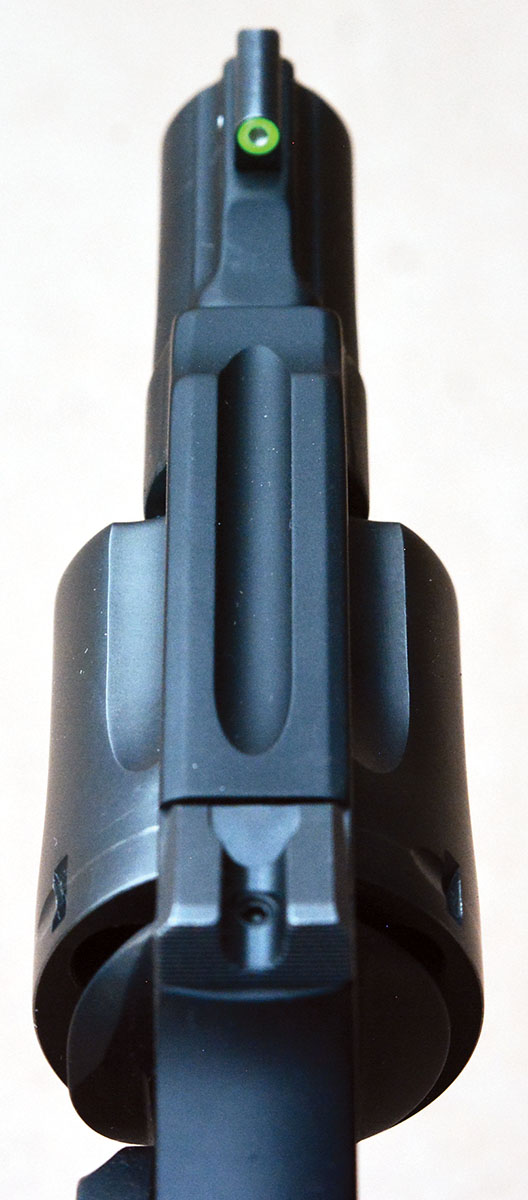
In addition to a green tritium front sight, the 432UC features a large U-Notch rear sight that is windage adjustable and snag-free.
In 1957, the 38 Chiefs Special became the Model 36, but there were many variations that included the lightweight Models 37, 38 and stainless- steel Model 60. Eventually, several six-shot rimfires were added, commonly known as Kit Guns, but in more recent years, an incredible number of rimfire and centerfire versions have been added, including the 357 Magnum chambering. Suffice it to say that Smith & Wesson’s J-frame has been a huge success. For today’s purposes, however, let’s look at the Model 432UC (Ultimate Carry), which is a 6-shot 32 H&R Magnum and is a Lipsey exclusive.
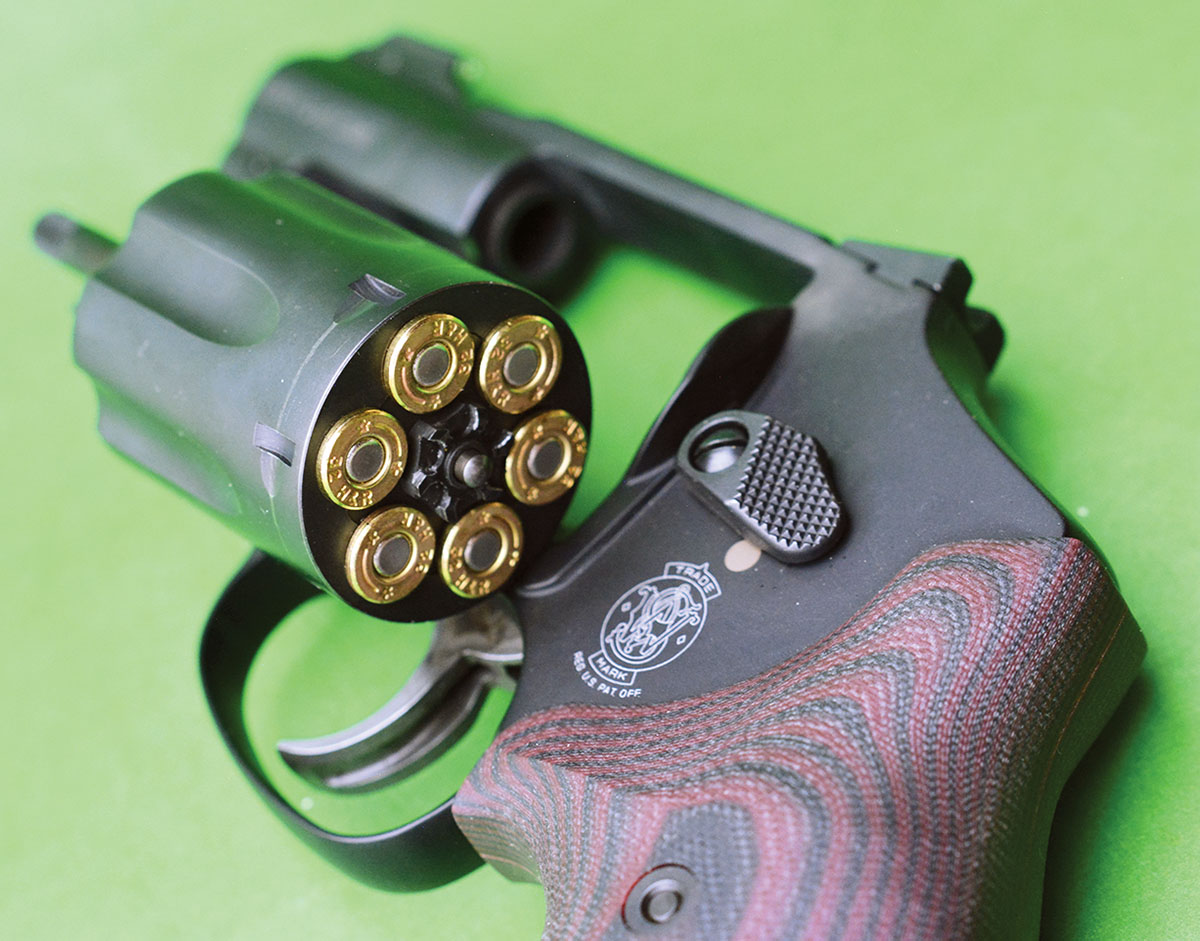
The 432UC 32 H&R Magnum boasts of having six shots, rather than the five shots of the same gun chambered in 38 Special.
The 432UC weighs just over 17 ounces and features an alloy frame, a steel cylinder and a two-piece barrel constructed of steel and alloy. It is hammerless and double-action only, with a rounded, smooth trigger that lends itself to double-action work. The factory performed some modest reengineering to smooth the action. In the process, they basically upgraded the action into the Endurance Package first implemented on N-Frame 44 Magnums in the late 1980s. The finish is matte black. There is also a stainless/alloy version available, the Model 632UC. For those that may wish for the same gun chambered in 38 Special, that is also available as the Models 442UC and 642UC.
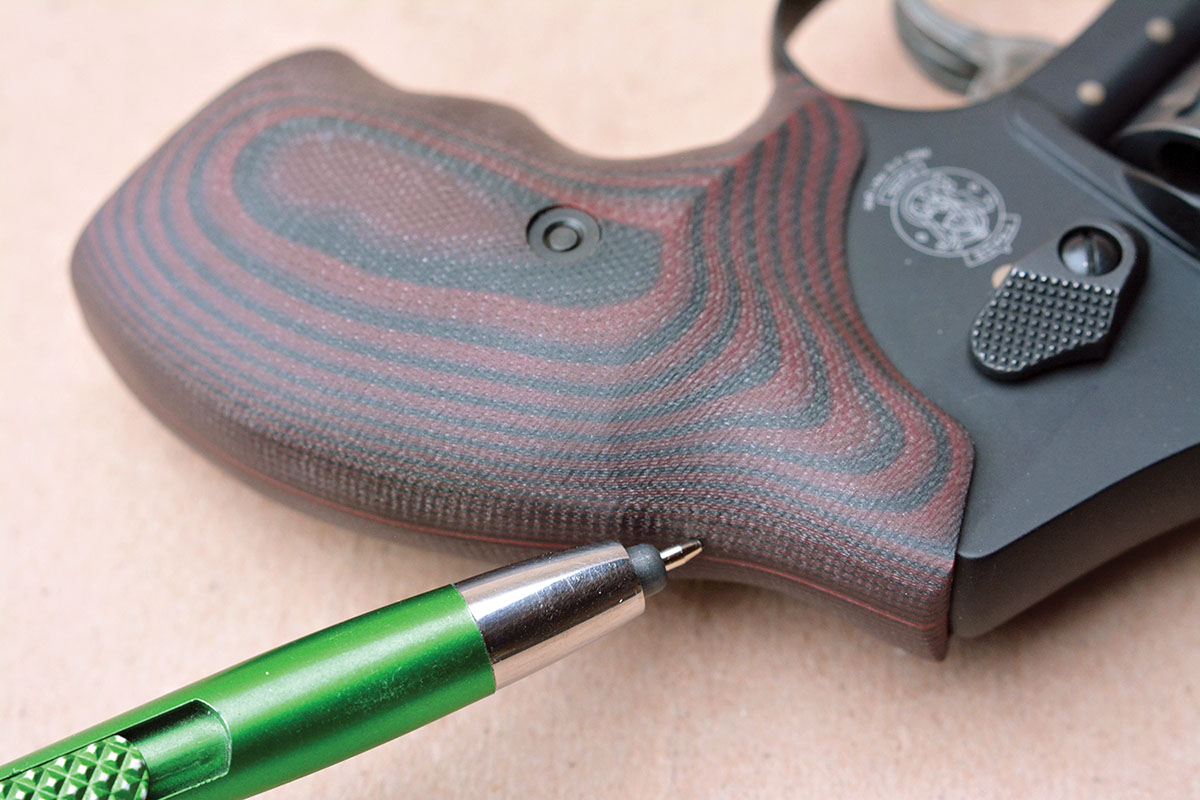
The grip is a Jordan style, but narrow, rounded and reduces felt recoil. It also better accommodates the use of speed loaders.
This sixgun is not just another J-frame; rather, some features make it a standout model. First are the sights. Historically, other than target and Kit Gun models with sights that snag when used for concealed carry, the J-frame Chiefs Special has always been fitted with fixed sights. Aging eyes can have difficulty seeing them, or when changing loads, the point of impact usually changes. Sometimes, they shoot to one side or the other, which is difficult to correct. The 432UC features an XS Sights green tritium dot front sight for high visibility during all lighting conditions. The rear sight is windage adjustable but boasts a low profile and tapered profile to prevent snagging. It has a wide U-Notch shape that is easy to see and centers in conjunction with the front sight. This combination helps with close-range speed shooting, as sights are fast and easy to align on target.
Another notable feature is the stocks (grips) that are laminated synthetic and based loosely on the Bill Jordan pattern. Essentially, they encompass the round butt to fill the grip frame hump that some shooters complain about when it hits the web of the hand during recoil. The grips are also lightweight, sculptured (narrowed) with rounding and have modest finger grooves. This results in outstanding comfort and control and better accommodates using speed loaders.
This brings us to the 32 H&R Magnum introduced by Federal Cartridge and Harrington & Richardson in 1983. Soon thereafter, Smith & Wesson, Ruger, Marlin and many other companies began offering sixguns and rifles. Original ballistics listed an 85-grain JHP bullet at 1,100 fps and a 95-grain Lead SWC bullet at 1,030 fps. The maximum average pressure was established at 21,000 copper units of pressure (CUP), but has not been updated to pounds per square inch (psi) figures. This was an appropriate pressure level for the H&R-manufactured revolvers.
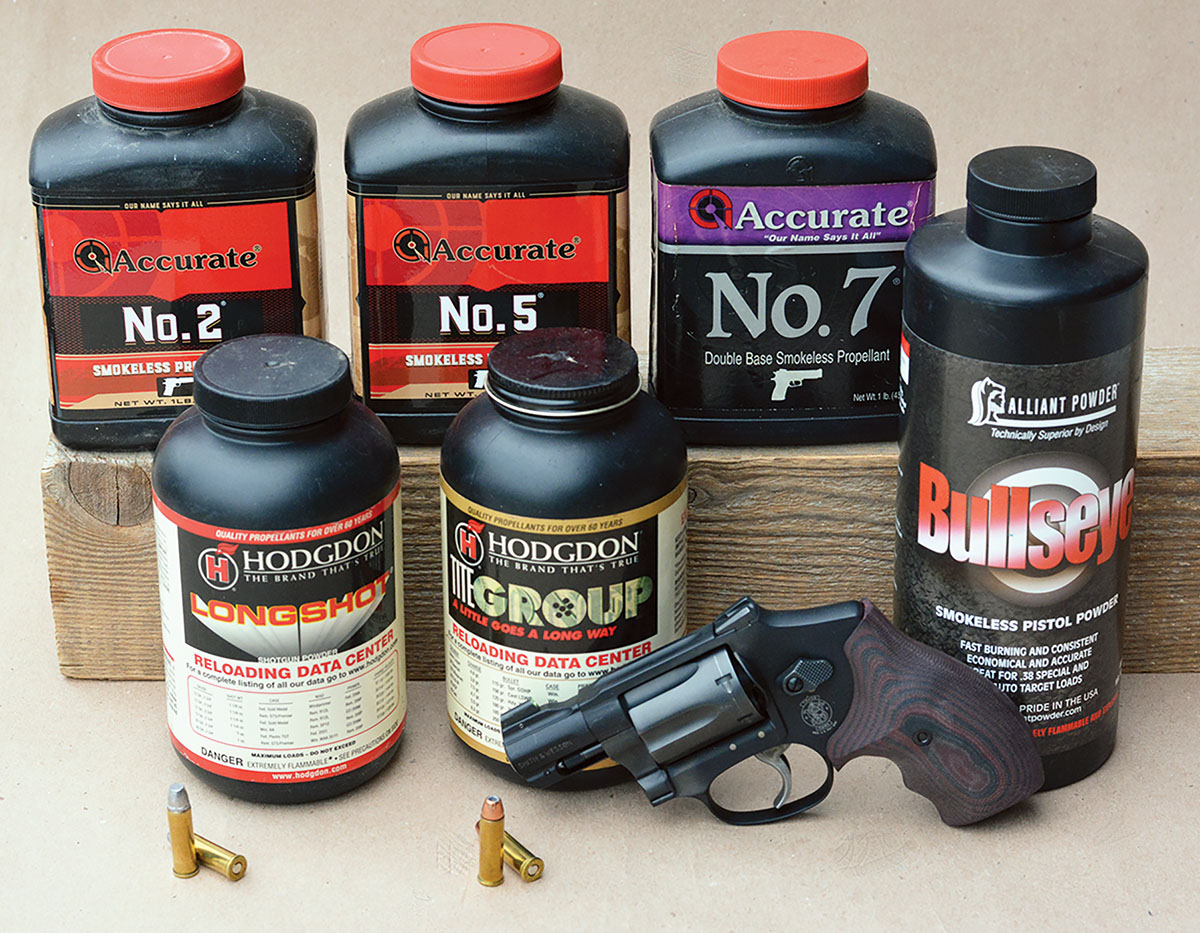
Several powders gave excellent performance in the Smith & Wesson 432UC 32 H&R Magnum.
Soon, handloaders recognized that the 32 Magnum could be loaded at much higher pressures and velocities when used in strong sixguns such as the Ruger Single-Six, Smith & Wesson Model 16 (K-frame), Dan Wesson and several others. However, +P style proprietary factory loads and +P style handload data should not be used in S&W J-frame sixguns. In short, the J-frame in five-shot calibers (such as 38 Special and 357 Magnum) features bolt stop notches located between the chambers. This results in plenty of steel surrounding the chamber or, more specifically, the outside chamber walls. The 32 is a six-shot gun and the bolt notches are located more or less directly over the outside of the chamber wall, which becomes the weak link so-to-speak. For these reasons, J-frame guns should only be used in conjunction with standard pressure 32 Magnum loads.
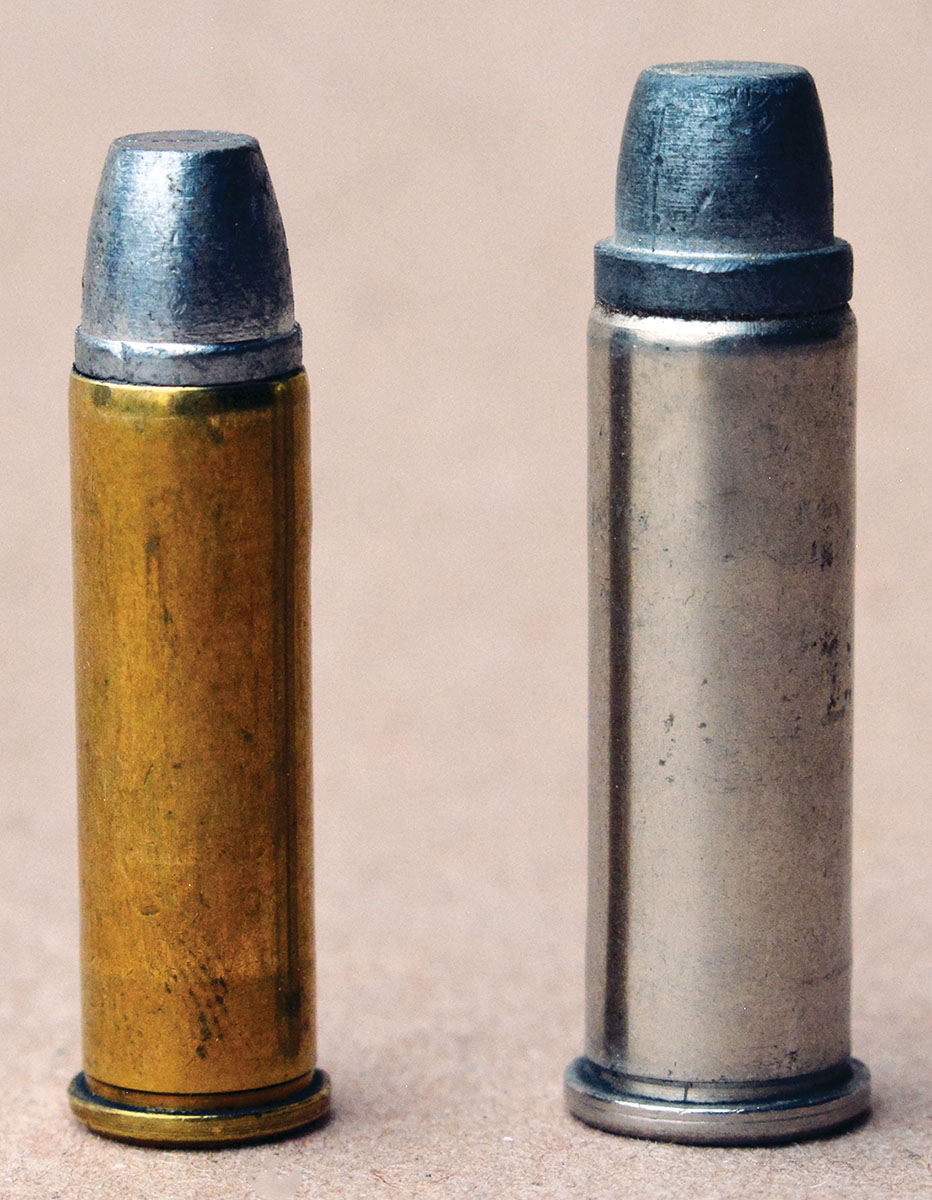
The 32 H&R Magnum offers less recoil than the 38 Special but also features a six-round capacity.
The 32 Magnum is appealing in the J-frame because it offers one more round, and the recoil is noticeably less than that of the 38 Special. This makes it an excellent option for recoil-sensitive shooters, but it also allows faster follow-up shots and is easier to shoot accurately. Interestingly, the sales of the UC revolvers in 32 H&R Magnum and 38 Special are essentially tied.
As can be seen in the accompanying tables, Buffalo Bore Ammunition offers a 100-grain wadcutter standard pressure load that reaches 919 feet per second (fps) from the 1.860-inch barrel. Although they are usually associated with target work, wadcutter bullets are viable choices for defense purposes. In short, the full-caliber meplat delivers great shock without expansion, and penetration is deep and reliable. For even greater penetration, the Rim Rock 130-grain SWC-FP bullet reached 910 fps when pushed with 3.3 grains of Hodgdon Longshot powder.
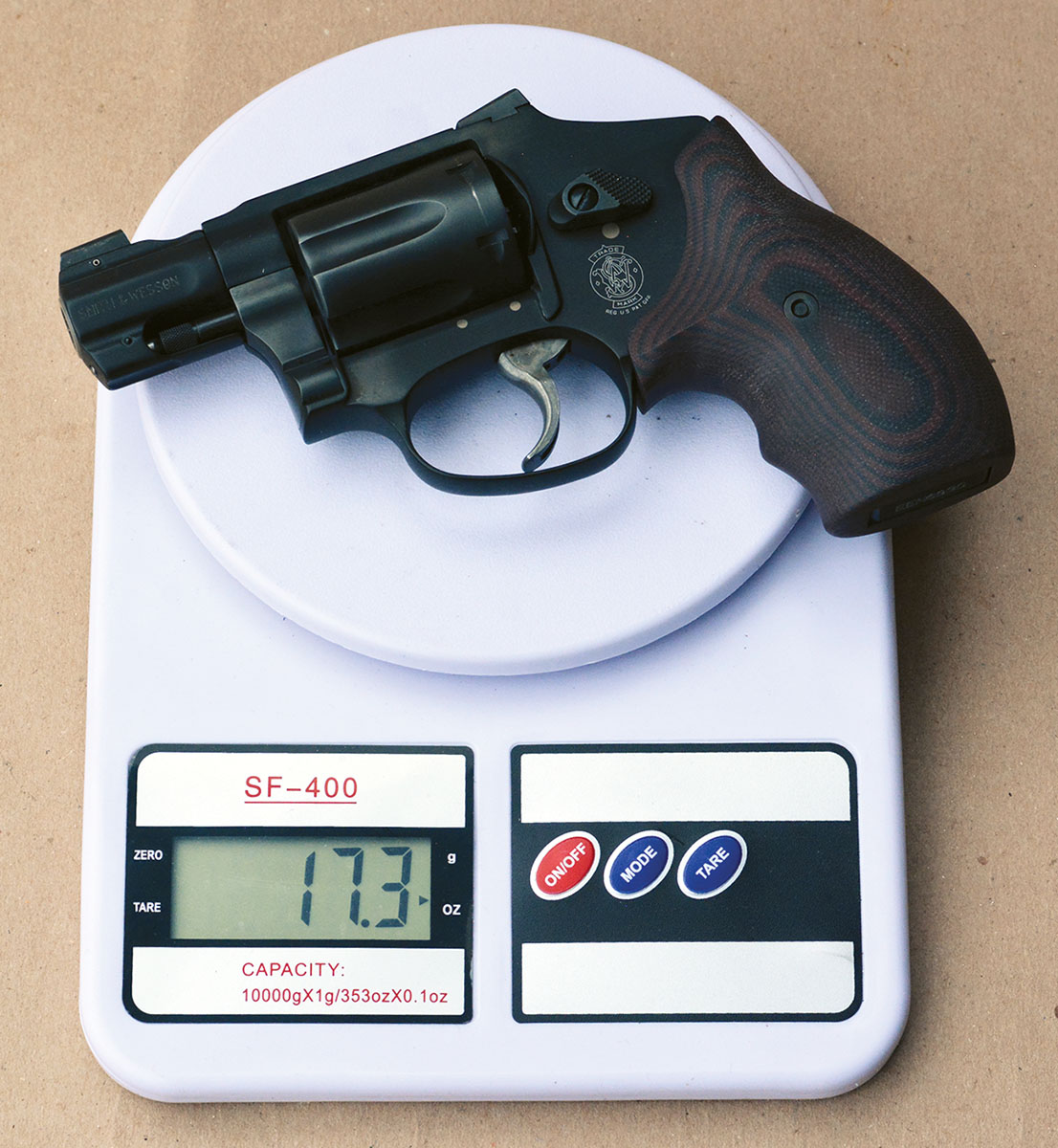
At just over 17 ounces, the 432UC is a practical concealed-carry gun.
For those that want a load that offers expansion, 7.0 grains of Accurate No. 7 powder pushed the 85-grain Hornady XTP bullet to 926 fps and offers mild recoil. A more potent load includes the 100-grain Hornady XTP pushed to 1,018 fps using 5.5 grains of Accurate No. 5 powder, which is respectable power.
As shown in the accompanying tables, targets were placed at 21 feet, which is appropriate for a double-action-only, pocket-style sixgun sporting a 1.860-inch barrel (actual measurement). Most loads, factory and handloads, grouped into 1.5 to 2-inches, and the gun was very easy to control during rapid-fire.
Smith & Wesson’s J-frame has enjoyed huge popularity for 75 years, and it seems more relevant today than at any time in its history. It is ultra-safe, ultra-reliable, easy to use and easy to conceal. The 432UC boasts an updated grip, adjustable snag-free rear sight and tritium front sight. It offers lower recoil and six shots! It is another worthy concealment revolver that is selling extremely well.







.jpg)
.jpg)


